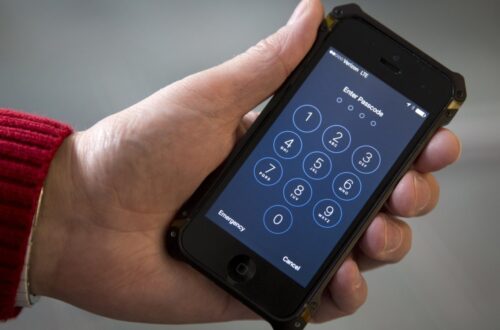Enhance your road safety with the latest hands-free technology in cars. Seamlessly interact with car features using voice commands for a safer driving experience with minimized distractions. Stay connected without taking your hands off the wheel by utilizing hands-free communication features like making calls and sending messages via voice commands. These advancements contribute greatly to improving road safety and creating a more efficient and safer driving environment. Find out more about the evolution and benefits of hands-free technology for enhanced road safety.
Evolution of Hands-Free Technology
As hands-free technology continues to advance, it has revolutionized the way drivers interact with their vehicles. From the early days of basic Bluetooth connectivity to modern voice-controlled systems, the evolution of hands-free technology has been remarkable. Initially, hands-free capabilities were limited to answering calls or changing music, but now, these systems can do so much more.
Today's hands-free technology integrates seamlessly with smartphones, navigation systems, and even smart home devices. Drivers can now make calls, send messages, and adjust settings without ever taking their hands off the wheel or eyes off the road. The convenience and safety benefits of these advancements are undeniable.
Voice recognition software has improved dramatically, allowing for more natural and accurate interactions between drivers and their vehicles. Commands can be spoken conversationally, making the driving experience smoother and more intuitive. As technology continues to progress, we can expect even more sophisticated hands-free systems that further enhance road safety and driver convenience.
Benefits of Hands-Free Systems
Enhancing driver safety and convenience, hands-free systems in cars provide seamless interaction without compromising focus on the road. These systems offer various benefits that make driving a safer and more enjoyable experience:
- Reduced Distractions: By allowing you to make calls, send messages, and control entertainment systems without taking your hands off the wheel or eyes off the road, hands-free technology minimizes distractions.
- Improved Focus: With voice commands handling tasks that would otherwise require manual input, you can maintain your focus on driving and react more quickly to potential hazards.
- Enhanced Accessibility: Hands-free systems make it easier for individuals with disabilities to operate various functions in the car, promoting inclusivity and independence.
- Convenience: Performing tasks hands-free adds a level of convenience to driving, such as adjusting settings, finding your way, or managing multimedia options effortlessly while on the go.
Voice-Activated Controls in Cars
Voice-Activated controls in cars offer a seamless and intuitive way to interact with various features while keeping your focus on the road ahead. By simply using your voice, you can adjust the temperature, change the music, make a call, or even input a navigation destination without having to take your hands off the wheel or eyes off the road. This hands-free technology allows for a safer driving experience as it minimizes distractions and helps you stay more focused on the task of driving.
With voice-activated controls, you can keep your attention on the road while still accessing important functions in your car. Whether you need to send a quick message, find a nearby gas station, or adjust your seat settings, voice commands make it easy and convenient to do so without compromising safety. This technology not only enhances convenience but also contributes to reducing the risk of accidents caused by manual distractions. Embracing voice-activated controls can lead to a more efficient and safer driving environment for everyone on the road.
Impact on Driver Distractions
By minimizing manual distractions and keeping your focus on the road, voice-activated controls in cars greatly reduce the potential for driver distractions. With this technology, you can stay more engaged with your surroundings while still accessing essential functions in the vehicle. Here are some key points highlighting the impact of hands-free technology on driver distractions:
- Promotes Eyes on the Road: By allowing you to control various car functions through voice commands, you can keep your eyes on the road at all times.
- Reduces Cognitive Overload: Voice-activated controls help in reducing cognitive overload by simplifying the process of interacting with different features of the car.
- Enhances Reaction Time: With minimized distractions, your reaction time to unexpected situations on the road improves significantly.
- Increases Overall Safety: By cutting down on distractions, hands-free technology contributes to overall safety for both the driver and other road users.
Hands-Free Communication Features
Hands-Free communication features in cars allow you to stay connected without taking your hands off the wheel. With hands-free calling, you can make and answer phone calls using voice commands, keeping your focus on the road ahead. This feature enables you to stay in touch with family, friends, or work contacts while driving safely. Hands-Free text messaging is another valuable feature that lets you send and receive texts without needing to type or read them manually. By dictating your messages, you can keep your attention where it matters most – on the road.
Moreover, many vehicles now come equipped with hands-free virtual assistants like Apple CarPlay or Android Auto, offering a wide range of voice-activated functions. These assistants can help you navigate, play music, or even control smart home devices, all while keeping your hands on the wheel and eyes on the road. Hands-Free communication features not only enhance convenience but also contribute significantly to reducing distractions and improving overall road safety.
Safety Regulations and Hands-Free Tech
To guarantee road safety and compliance, understanding safety regulations related to hands-free technology in cars is crucial. Grasping the rules and guidelines governing hands-free tech can help you utilize these features responsibly and effectively. Here are some key points to ponder:
- Hands-Free Calling Limits: Regulations may specify limits on the duration of hands-free calls to prevent distractions while driving.
- Emergency Assistance Integration: Some regulations require hands-free systems to seamlessly connect with emergency services in case of an accident or emergency.
- Voice Command Accuracy Standards: Regulations might outline standards for the accuracy and reliability of voice commands to ensure smooth operation without errors.
- Display Brightness and Size Restrictions: There could be regulations regarding the brightness and size of displays to prevent excessive glare and distractions for the driver.
Adhering to these safety regulations will not only keep you on the right side of the law but also contribute to safer driving practices for everyone on the road.
Integration With Navigation Systems
Enhance your driving experience by seamlessly integrating hands-free technology with navigation systems. By combining these two features, you can focus more on the road ahead while still receiving important directions and information. Hands-free technology allows you to control various functions in your car using voice commands, such as making calls, sending messages, or adjusting the music, all without taking your hands off the wheel. When integrated with navigation systems, you can simply ask for directions to a specific location or get real-time traffic updates without having to manually input information into the GPS.
This integration not only enhances convenience but also improves safety on the road. Instead of fumbling with buttons or looking at screens, you can keep your eyes on the road and your hands on the wheel. Navigation systems can provide turn-by-turn directions through audio cues, ensuring that you reach your destination safely and efficiently. By seamlessly integrating hands-free technology with navigation systems, you can enjoy a more streamlined and safer driving experience.
Future Trends in Hands-Free Driving
Exploring upcoming advancements in hands-free driving technology reveals exciting possibilities for enhancing road safety and driver convenience. As we look ahead to the future of hands-free driving, here are some trends to watch out for:
- Artificial Intelligence Integration: AI will play a significant role in improving hands-free driving systems by enhancing real-time decision-making processes.
- Enhanced Sensor Technologies: Advanced sensors will provide more accurate data for hands-free driving, leading to safer and more reliable operations.
- Gesture Control Features: Future systems may incorporate gesture control for functions like changing music or adjusting climate settings, reducing the need for manual inputs.
- 5G Connectivity: The integration of 5G technology will enable faster and more responsive communication between vehicles and infrastructure, enhancing overall driving experience.
These trends represent the cutting-edge developments that will shape the future of hands-free driving, offering a glimpse into a more efficient and safer driving environment.
Frequently Asked Questions
How Does Hands-Free Technology in Cars Impact the Overall Driving Experience for Individuals With Disabilities?
When using hands-free technology in cars, individuals with disabilities can experience improved accessibility and independence while driving. Voice commands and controls make it easier to navigate, communicate, and stay connected safely on the road.
Are There Any Studies That Show the Long-Term Effects of Using Hands-Free Systems on Driver Behavior and Attention?
When using hands-free systems in cars, studies show the long-term effects on driver behavior and attention. Staying informed about research findings can help you make safer choices while driving, contributing to overall road safety.
Can Hands-Free Communication Features in Cars Be Hacked or Compromised by External Parties?
Indeed, hands-free communication features in cars can be hacked or compromised by external parties. It's important to stay informed about potential vulnerabilities and take necessary precautions to safeguard your personal information and guarantee your safety while driving.
What Are the Potential Privacy Concerns Associated With Using Voice-Activated Controls in Cars?
When using voice-activated controls in cars, be cautious about potential privacy concerns. Your personal data and conversations could be at risk of exposure or misuse. Stay vigilant and consider the security implications of hands-free technology.
How Do Safety Regulations Vary for Hands-Free Technology in Different Countries or Regions?
In different countries or regions, safety regulations for hands-free technology vary. It's important to be aware of these differences when driving. Make sure you understand the specific rules and requirements wherever you may be.
Conclusion
Overall, hands-free technology in cars has come a long way in improving road safety by reducing driver distractions. With voice-activated controls, hands-free communication features, and integration with navigation systems, drivers can stay focused on the road while still accessing important information. As safety regulations continue to evolve and future trends in hands-free driving emerge, we can expect even greater advancements in keeping drivers safe on the road.


